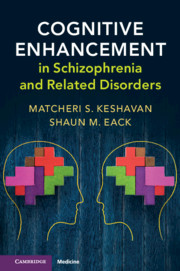Book contents
- Cognitive Enhancement in Schizophrenia and Related Disorders
- Cognitive Enhancement in Schizophrenia and Related Disorders
- Copyright page
- Dedication
- Contents
- Foreword
- Preface
- Acknowledgments
- Section 1 Basic Principles of Cognitive Enhancement
- Section 2 Approaches to Cognitive Enhancement
- Section 3 Personalizing and Optimizing Cognitive Enhancement
- Glossary
- References
- Index
- References
References
Published online by Cambridge University Press: 18 March 2019
- Cognitive Enhancement in Schizophrenia and Related Disorders
- Cognitive Enhancement in Schizophrenia and Related Disorders
- Copyright page
- Dedication
- Contents
- Foreword
- Preface
- Acknowledgments
- Section 1 Basic Principles of Cognitive Enhancement
- Section 2 Approaches to Cognitive Enhancement
- Section 3 Personalizing and Optimizing Cognitive Enhancement
- Glossary
- References
- Index
- References
- Type
- Chapter
- Information
- Cognitive Enhancement in Schizophrenia and Related Disorders , pp. 155 - 178Publisher: Cambridge University PressPrint publication year: 2019

